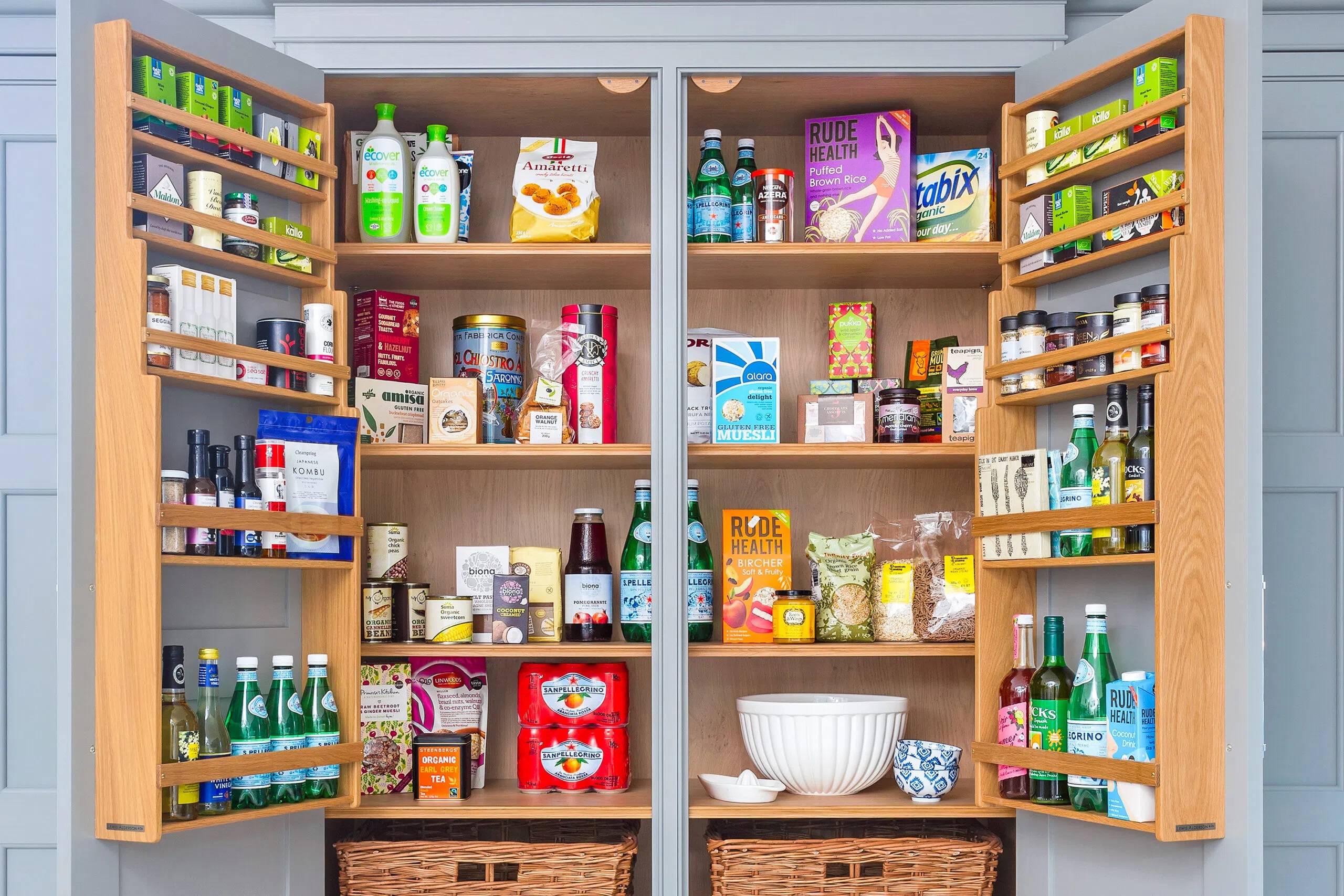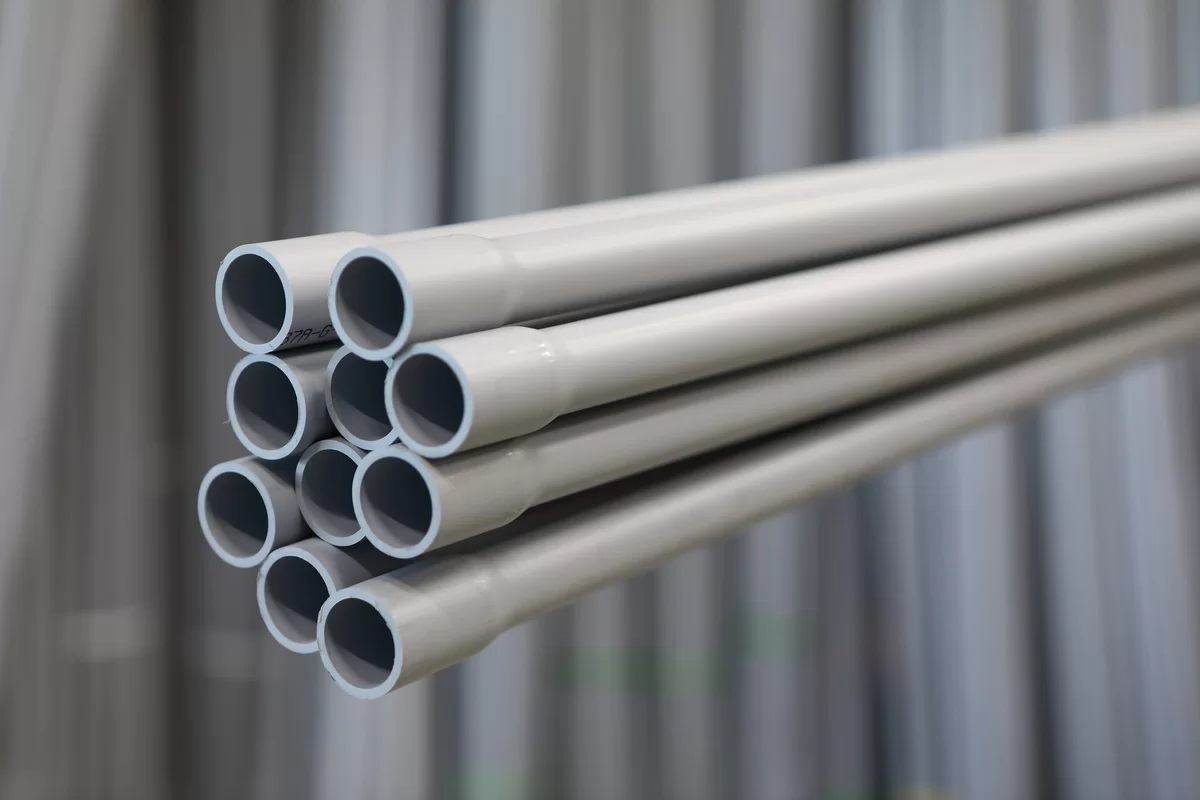

Articles
When Storing Products It Is Important
Modified: January 6, 2024
Discover the importance of pantry storage for keeping your products fresh and organized. Optimize your space and maintain the quality of your items with these valuable tips.
(Many of the links in this article redirect to a specific reviewed product. Your purchase of these products through affiliate links helps to generate commission for Storables.com, at no extra cost. Learn more)
Introduction
Welcome to our guide on the importance of proper storage when it comes to preserving the quality and longevity of your products. Whether you are a business owner or simply someone looking to organize your personal belongings, understanding the best practices for storing products is essential. In this article, we will explore various factors to consider when it comes to storage, including temperature and moisture control, organization, inventory management, and safety measures.
Effective storage methods not only ensure that your items are well-preserved but also save you time and money in the long run. By implementing proper storage techniques, you can prevent damage, reduce waste, and maximize the usability of your products.
So, whether you’re dealing with food products, retail inventory, or personal belongings, read on to discover the key elements of proper storage and how they can benefit you.
Key Takeaways:
- Proper storage practices are crucial for preserving product quality, reducing waste, and optimizing efficiency. Factors such as temperature control, organization, and safety measures play key roles in ensuring successful storage.
- Effective inventory management, including regular stocktaking and demand forecasting, is essential for maintaining optimal stock levels and streamlining order fulfillment. Safety measures, such as proper lighting and equipment handling, are vital for creating a secure storage environment.
Read more: Importance Of Home Security When Renting
Importance of Proper Storage
Proper storage plays a crucial role in maintaining the quality, integrity, and safety of your products. Whether you’re storing perishable goods, fragile items, or even electronic devices, following established storage protocols is essential. Here are some key reasons why proper storage is of utmost importance:
- Prolonged Shelf Life: Correct storage conditions can significantly extend the shelf life of various products. For example, perishable food items stored at the ideal temperature and humidity levels can remain fresh and edible for longer periods, reducing waste and increasing profitability for businesses.
- Preservation of Quality: Proper storage techniques help preserve the quality and integrity of products. For instance, when storing delicate or fragile items, such as glassware or electronics, ensuring appropriate packaging, cushioning, and stackability can prevent breakage and damage during transit or extended periods of storage.
- Prevention of Contamination: By storing products in sanitized and controlled environments, you can minimize the risk of contamination. This is especially crucial for industries such as pharmaceuticals, where product contamination can have severe consequences on consumer health.
- Cost Efficiency: Implementing effective storage methods can lead to cost savings in the long run. With proper organization and labeling, you can easily locate and access items, reducing the time and effort spent searching for lost or misplaced goods. Additionally, avoiding product spoilage or damage due to incorrect storage conditions can save you money on replacements or repairs.
- Compliance with Regulations: Many industries have specific storage regulations and guidelines to ensure product safety and integrity. By adhering to these standards, you not only meet legal requirements but also enhance your reputation as a reliable and responsible business.
Overall, proper storage practices are essential for maintaining the quality and safety of products, reducing waste, and optimizing operational efficiency. By investing time and resources into organizing and implementing effective storage methods, you can reap numerous benefits and ensure long-term success for your business or personal belongings.
Factors to Consider
When it comes to proper product storage, there are several key factors to consider. These factors will help determine the appropriate storage conditions and methods for your specific items. Let’s explore some of the most important factors:
- Type of Product: The nature of your product will dictate the storage requirements. Different items have varying sensitivities to temperature, humidity, light, and other environmental factors. For example, perishable goods like fresh produce require refrigeration, while sensitive electronic devices may need to be stored in temperature-controlled rooms.
- Storage Space: Assess the available storage space and consider its limitations. Ensure that you have adequate room to properly organize and store your products. Additionally, make sure the storage area is free from potential hazards that could damage or compromise the quality of your items.
- Temperature and Humidity: Maintaining the correct temperature and humidity levels is crucial for various products. For instance, certain chemicals, medications, and perishable foods require specific temperature-controlled environments to prevent spoilage or degradation.
- Protection from Light: Some products, such as certain types of wine or pharmaceuticals, are sensitive to light exposure. It’s important to store these items in opaque or colored containers or in a dark storage area to maintain their quality and effectiveness.
- Air Circulation: Proper air circulation is essential to prevent the buildup of moisture, mold, or mildew. Avoid storing items in excessively cramped spaces or in a way that restricts ventilation. This is particularly important for items that are prone to moisture damage, such as clothing or documents.
- Security: Consider the security measures needed to protect your products from theft, damage, or unauthorized access. This may include installing security cameras, using lockable storage units, or implementing access control systems.
- Accessibility: When storing products, it’s important to organize them in a way that allows for easy access. Consider using shelving units, stackable containers, or labeled bins to ensure that you can quickly locate and retrieve items when needed.
- Environmental Impact: Choose storage solutions that minimize the environmental impact. For example, opt for eco-friendly packaging materials or invest in energy-efficient climate control systems to reduce energy consumption and waste.
By carefully considering these factors, you can create an efficient and suitable storage environment that meets the unique requirements of your products.
Temperature and Moisture Control
Proper temperature and moisture control are vital factors when it comes to storing products effectively. Let’s delve into the importance of maintaining the right conditions and explore some strategies to achieve optimal temperature and moisture control:
Temperature Control:
Many products have specific temperature requirements to ensure their quality, safety, and longevity. Here are a few considerations:
- Refrigeration: Perishable items like fresh meats, dairy products, and certain fruits and vegetables require refrigeration to slow down the growth of bacteria and preserve freshness. Maintain your refrigeration units at the appropriate temperatures recommended for each type of product.
- Freezing: Some products can be stored for longer periods by freezing. However, it’s important to note that freezing temperatures can affect the texture and quality of certain items. Follow recommended freezing guidelines and be aware of any potential risks associated with freezing specific products.
- Ambient Temperature: While not all products require specific temperature control, it’s still important to avoid extreme temperature fluctuations. Excessive heat or cold can damage items such as electronics, chemicals, and certain medications. Ensure that your storage area maintains a stable ambient temperature suitable for the items stored.
Moisture Control:
Moisture can compromise the quality and integrity of many products. Here are strategies to control moisture levels:
- Humidity Monitoring: Use hygrometers or other humidity monitoring tools to measure and maintain appropriate humidity levels in your storage area. Adjust humidity using dehumidifiers or humidifiers as needed, depending on the specific requirements of your products.
- Proper Ventilation: Ensure proper air circulation in your storage space to prevent the buildup of moisture. Good ventilation helps minimize the risk of mold, mildew, or condensation, which can cause damage to items like clothing, documents, and wooden furniture.
- Sealed Packaging: For items sensitive to moisture, consider using sealed packaging or moisture-absorbing materials, such as silica gel packets, to protect against humidity. These can help keep the products dry and in optimal condition.
Remember, maintaining the right temperature and moisture levels is crucial for ensuring the quality, safety, and longevity of your stored products. By implementing proper temperature and moisture control measures, you can effectively safeguard your inventory and prevent unnecessary damage or spoilage.
When storing products, it is important to keep them in a cool, dry place away from direct sunlight. This helps to maintain their quality and extend their shelf life.
Organization and Labeling
Proper organization and labeling are key factors when it comes to efficient product storage. Implementing effective organization methods and clear labeling systems can save you time, reduce the risk of errors, and improve overall productivity. Let’s explore some strategies to help you optimize organization and labeling in your storage space:
Inventory Management:
- Categories and Zones: Divide your storage area into specific categories or zones based on product type, size, or frequency of use. This will make it easier to locate specific items and maintain a systematic approach to storage.
- Storage Containers and Shelving: Invest in high-quality storage containers, bins, or shelving units that are appropriate for your products. Use consistent sizes and labels to create a neat and streamlined storage system.
- FIFO Principle: When storing perishable or time-sensitive products, follow the “First In, First Out” principle. Place recently received items at the back and older ones at the front to ensure proper rotation and minimize waste.
Labeling Systems:
- Clear and Concise Labels: Clearly label each item or container with essential information such as product name, SKU, batch numbers, or expiration dates. Ensure that labels are legible, waterproof, and durable.
- Color Coding: Consider implementing a color-coding system to easily identify different categories or groups of items. For example, use green labels for perishable items, blue for electronics, and red for hazardous materials.
- Barcode or QR Code Scanning: Utilize barcode or QR code labeling systems for efficient inventory management. This allows for accurate tracking, faster stocktaking, and seamless integration with digital inventory management systems.
- Centralized Inventory Database: Maintain a centralized inventory database or software solution to keep track of stored items, their locations, and other relevant details. Make sure to regularly update and reconcile the database to ensure accuracy.
Remember, proper organization and labeling are crucial for easy access, inventory management, and overall efficiency in your storage area. By implementing effective organization strategies and utilizing clear labeling systems, you can streamline operations and save valuable time and resources.
Read more: How To Store Important Papers
Inventory Management
Effective inventory management is essential for maintaining accurate stock levels, reducing costs, and ensuring timely order fulfillment. Proper management of your inventory can prevent stockouts, minimize excess inventory, and streamline operations. Here are some key practices to optimize your inventory management:
Regular Stocktaking:
- Physical Counts: Conduct regular physical counts to reconcile your actual inventory levels with the recorded quantities in your inventory management system. This helps identify discrepancies, such as theft, misplacement, or data entry errors.
- Audit Trails: Implement audit trails to monitor inventory movement, including receipt, storage, and distribution. This provides a clear record of stock transactions and helps identify any discrepancies or issues in the supply chain.
- Automated Systems: Utilize inventory management software to track stock levels, generate reports, and automate processes such as reordering or generating pick lists. This improves accuracy, efficiency, and reduces manual errors.
Forecasting and Demand Planning:
- Demand Analysis: Analyze historical sales data, market trends, and customer demand patterns to forecast future demand accurately. This helps you determine optimal stock levels, reorder points, and plan for seasonal fluctuations or promotions.
- Supplier Collaboration: Establish effective communication and collaboration with your suppliers to anticipate lead times, stock availability, and potential disruptions. This allows for proactive inventory management based on real-time information.
- Safety Stock: Maintain safety stock levels to account for unexpected spikes in demand or delays in supply. This provides a buffer to prevent stockouts and ensures customer satisfaction.
Efficient Order Fulfillment:
- Order Processing: Implement streamlined and automated order processing systems to expedite order fulfillment. This includes efficient picking, packing, and shipping processes, as well as real-time order status updates.
- Just-in-Time (JIT) Inventory: Utilize JIT inventory management practices to receive and store inventory as close as possible to the time it is needed. This helps reduce storage costs, improve cash flow, and minimize the risk of obsolescence.
- Reverse Logistics: Develop a system for handling product returns and managing the reverse logistics process. This includes proper inspection, refurbishment, or disposal of returned items to minimize losses and maintain customer satisfaction.
By implementing sound inventory management practices, you can ensure optimal stock levels, minimize costs, and provide excellent customer service. Regular stocktaking, accurate demand forecasting, efficient order fulfillment, and strong supplier collaboration are the key elements for effective inventory management.
Safety Measures
Implementing appropriate safety measures when storing products is crucial to protect both the items themselves and the individuals handling them. Safety protocols help prevent accidents, reduce liability, and maintain a safe working environment. Here are some important safety measures to consider:
Storage Area Safety:
- Clear Pathways: Ensure that aisles and walkways in your storage area are clear and unobstructed. This prevents accidents caused by tripping or falling over misplaced items.
- Proper Lighting: Maintain adequate lighting in your storage space to improve visibility and prevent accidents. Regularly check and replace burnt-out bulbs or install motion-sensor lighting for energy efficiency.
- Fire Safety: Install and regularly check fire detection and suppression systems, including smoke detectors, fire extinguishers, and sprinkler systems. Create an emergency evacuation plan and conduct regular fire drills with your staff.
- Hazardous Materials: If you store hazardous materials, ensure compliance with safety regulations specific to the type of materials. Properly label containers, provide safety data sheets, and store these items in designated areas away from flammable or reactive substances.
Equipment Safety:
- Safe Handling Equipment: Provide appropriate handling equipment such as forklifts, pallet jacks, or dollies for moving heavy or bulky items. Train employees on the proper use of equipment and ensure regular maintenance and inspections.
- Weight Limitations: Clearly indicate weight limitations for storage shelves or pallet racks. Overloading storage structures can lead to collapse, causing damage to products and posing a serious safety risk.
- Personal Protective Equipment (PPE): Require employees to wear proper PPE, such as safety gloves, goggles, or steel-toed boots, when handling certain products or operating equipment. Provide training on PPE usage and ensure compliance with safety regulations.
Chemical Safety:
- Storage Guidelines: Follow proper storage guidelines for chemicals, including segregating incompatible substances and storing them in approved containers or cabinets.
- Spill Control: Have appropriate spill control measures in place, such as spill kits, absorbent materials, and secondary containment systems, to prevent accidental release and minimize environmental impact.
- Training: Ensure that employees handling chemicals are trained on safe handling procedures, including proper storage, ventilation, and disposal methods. Make safety data sheets readily available and accessible for reference.
Remember, safety should always be a top priority when storing products. By implementing and enforcing safety measures, you can protect your inventory, maintain a safe work environment, and mitigate potential risks and liabilities.
Conclusion
Proper storage practices are essential for preserving the quality, integrity, and safety of your products. By considering factors such as temperature and moisture control, organization and labeling, inventory management, and safety measures, you can optimize your storage space and minimize risks. Implementing effective storage methods not only ensures the longevity of your products but also improves operational efficiency and reduces costs.
When it comes to temperature and moisture control, maintaining the appropriate conditions for different items is crucial. Refrigeration, freezing, and proper ventilation systems help prevent spoilage, damage, and contamination. Organizing your storage space and implementing clear labeling systems enable easy access, accurate inventory management, and streamlined operations. Proper inventory management practices, such as regular stocktaking and demand forecasting, ensure optimal stock levels and timely order fulfillment.
Safety should never be overlooked when storing products. Creating a safe storage area with clear pathways, proper lighting, and fire safety measures reduces accidents and ensures a secure working environment. Additionally, following safety guidelines for handling equipment, hazardous materials, and chemicals protects both employees and the products themselves.
In conclusion, investing time and effort into understanding and implementing proper storage practices is essential for successful product storage. By taking into account the various factors, you can maintain the quality and longevity of your products, reduce waste, improve efficiency, and create a safe environment for both your inventory and your employees. Remember, effective storage practices contribute to the overall success of your business or personal storage endeavors.
Frequently Asked Questions about When Storing Products It Is Important
Was this page helpful?
At Storables.com, we guarantee accurate and reliable information. Our content, validated by Expert Board Contributors, is crafted following stringent Editorial Policies. We're committed to providing you with well-researched, expert-backed insights for all your informational needs.















0 thoughts on “When Storing Products It Is Important”